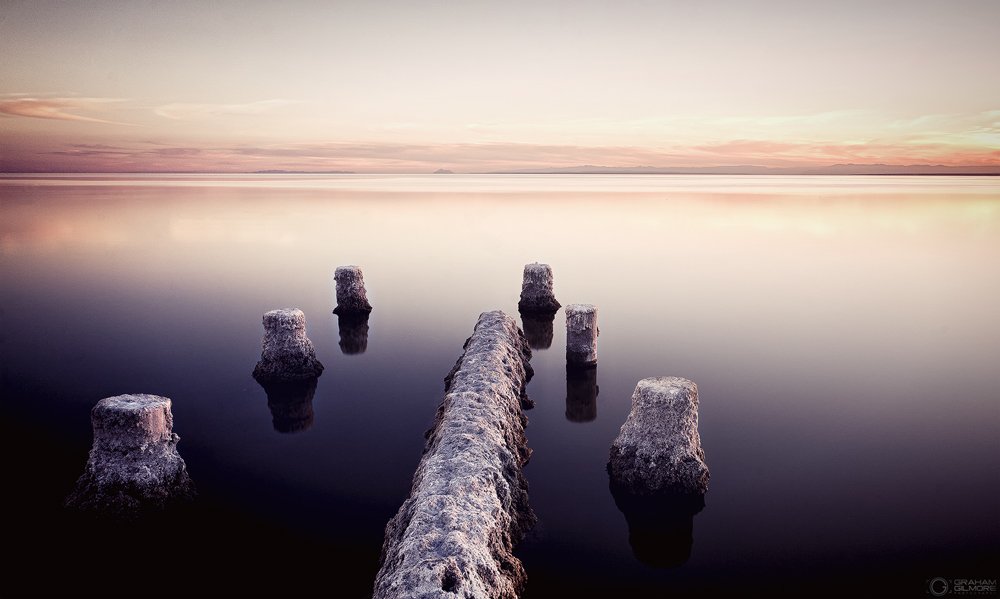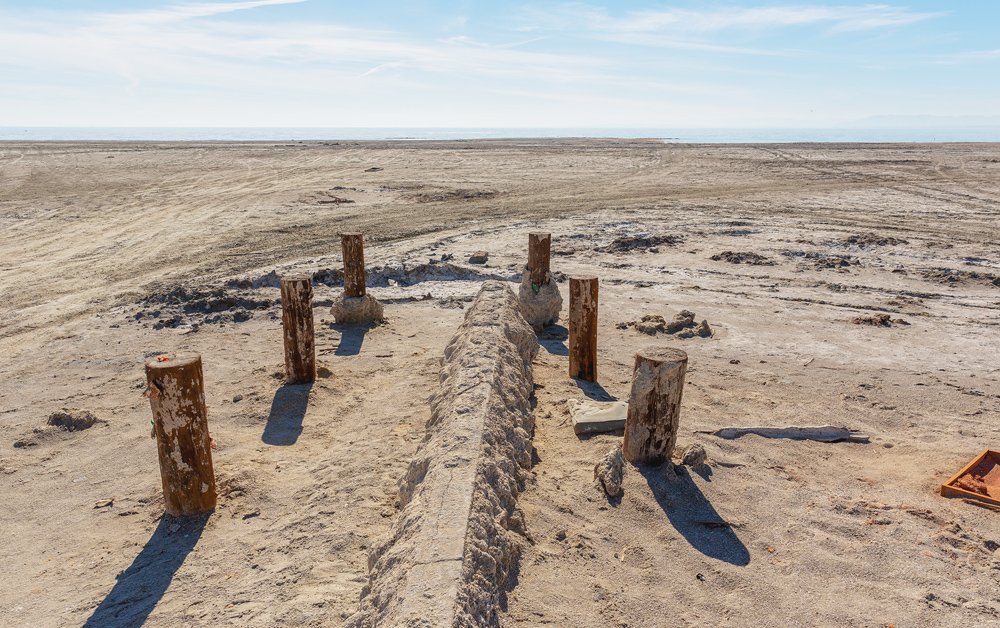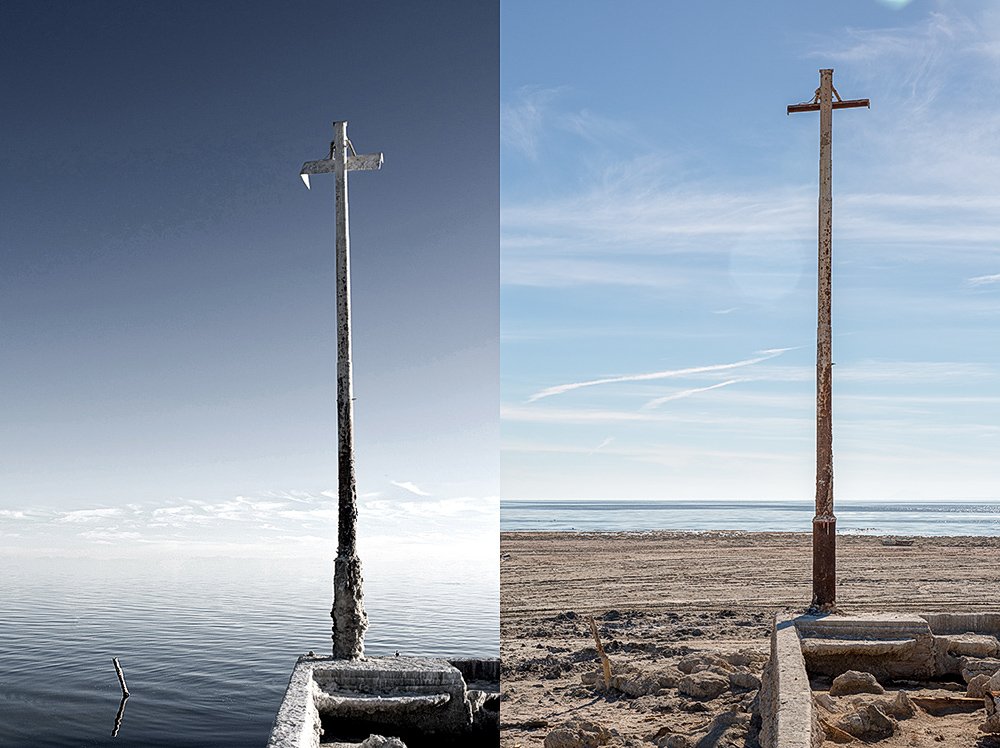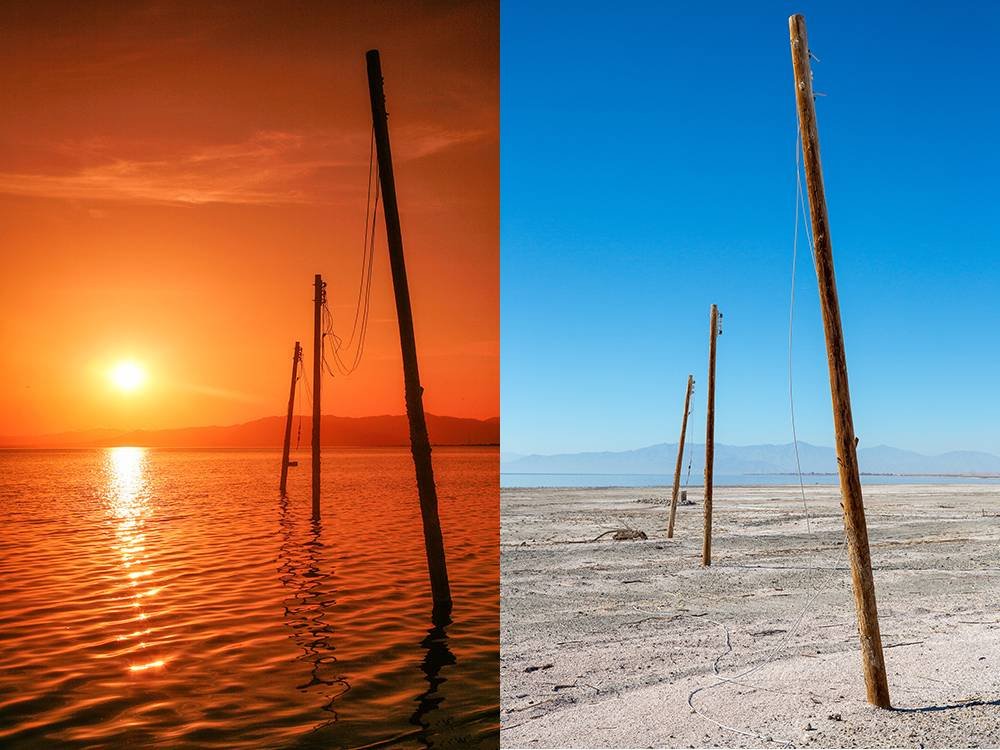The Salton Sea
Towards the end of 2018 we stayed in beautiful Palm Springs just 2 hours drive East of Los Angeles. During the trip we took a day drive out to the Salton Sea which is about 1 hour South in the Imperial Valley. It was to be my fourth visit to the area and the cool late November temperatures made it a pleasant trip. My last visit there was in October 2015 and it was 110f/43c. The extreme heat caused the sulfurous stench from the water to be much worse than normal, and was almost too much to bear. Shooting near the water I had to wrap my shirt around my mouth and nose and tried anything to keep the nausea at bay. This time thankfully the smell wasn't so bad. However, what surprised the most was just how much the waterline had receded since I started coming here almost 10 years ago, in 2018 it is really noticeable.
Once the Salton Sea was once a paradise, an Oasis even. In 1905 California engineers made a cut in the Colorado river to increase water flow into the area and provide extra water for farming and irrigation. A poorly engineered outflow could not contain the water that was being diverted and resulted in the area being flooded for a full two years filling the dry lake bed and creating the modern sea. It is the largest lake in California (and is visible from space) and by the 1950's and 60's it was fast becoming a popular tourist destination, with several towns forming along the waterline at Bombay beach, Salton Shores and the North shores. But by the late 70's, because of a poor outflow, salinity levels, pesticide run offs and algae blooms killed off the fish by the thousands and caused the massive stench that can be experienced to this day. The smell and the mass of dead fish being washed up upon its shores caused the tourist industry to rapidly decline, the beach actually looks white because of all the fish bone and dead barnacles. Its hard to imagine that the Salton Sea once attracted more visitors than Yosemite when all that's left now is a Mad Max style post apocalyptic wasteland.
Bombay Beach was one of the first areas I visited in 2009 ~ After nearly 10 years you can see how much the water level has receded.

One Interesting thing I heard about Bombay beach recently, is that while its commonly known that B29 bombers in World War II would run test exercises over the Salton Sea, in what would be practice for the atomic bombings of Hiroshima and Nagasaki. Bombay beach supposedly got its name because it was at that point in the sky above in which the aircraft would open its "bomb bay" doors in preparation for dropping the dummy bombs on targets in the water to the south. This is not something I can confirm, whether it is true or folklore it certainly is an interesting story.
Further along Bombay Beach, left 2009 - Right 2018.
Unfortunately, with the water drying up like this comes even bigger issues. Dried lake beds around the world are responsible for massive amounts of dust and particles being blown into the earths atmosphere. The Sahara desert alone is said to exhale some 28 million tons of nutrient rich dust into the earths atmosphere every year, this dust migrates across the planet and some of it even goes as far as fertilizing the Amazon rain forest.
The drying up of the Salton sea will eventually reveal over 75 square miles of playa. Once that soil drys up it is expected to emit toxic dust laced with various industrial and farming fertilizers and pesticides, all from agricultural run-offs created over the last 100 years. it is estimated that 100 tons of dust could blow off the area daily. This is an environmental disaster that is already underway. For example, in the Imperial Valley in 2015, for one third of the year the air quality failed to meet California's safety standards. More children are now admitted to ER in the surrounding areas for respiratory issues than the rest of California combined and an alarming percentage of Imperial Valley children are born with asthma.
At Niland Marina the evidence is clear. Left 2009 ~ Right 2018.
In March 2017 the state of California released a 10 year plan to address the problems of the Salton Sea. The plan involves diverting remaining farm run-off and mixing it with Salton sea water to create dust suppression cells similar to the ones used to treat Owens Lake some 300 miles north which, as of 2013 is the largest source of dust pollution in the United States. A recent progress report for the Salton Sea management program indicates that in 2018 it missed its target of suppressing 500 acres and in 2019 it is predicted to only manage 300 of some 1300 acres planned for the year. One can only hope the project gets the attention and funding needed to avert a potential environmental and humanitarian disaster. Only time will tell.
[ngg src="galleries" ids="15" display="pro_mosaic"]
*Top Image: Tranquility over the Salton Sea. Click here for details.

